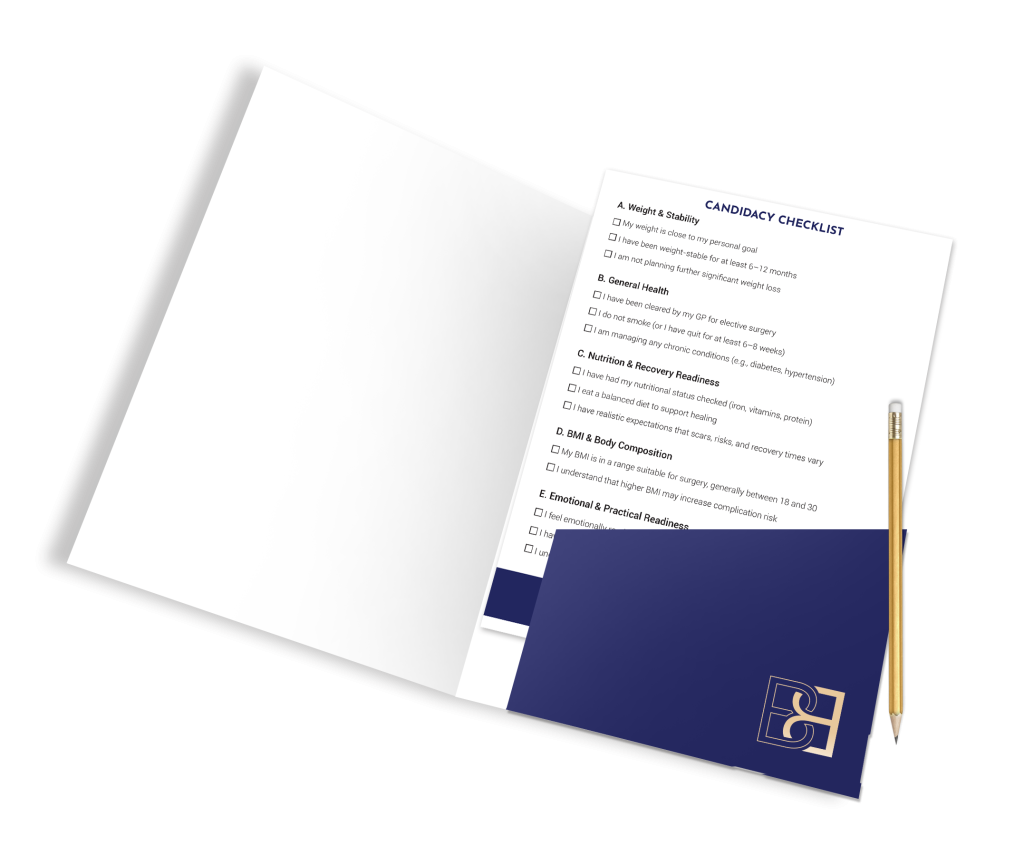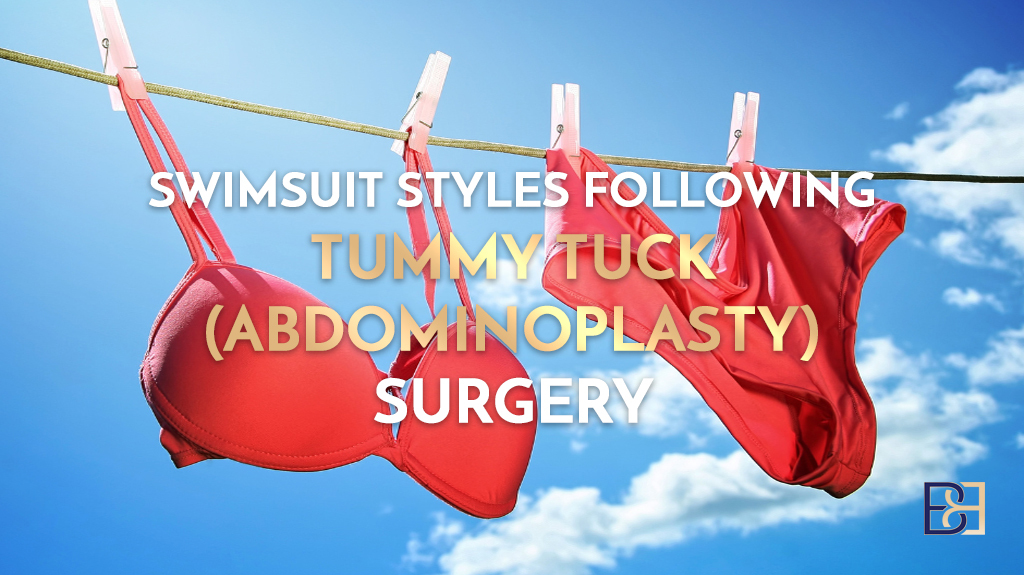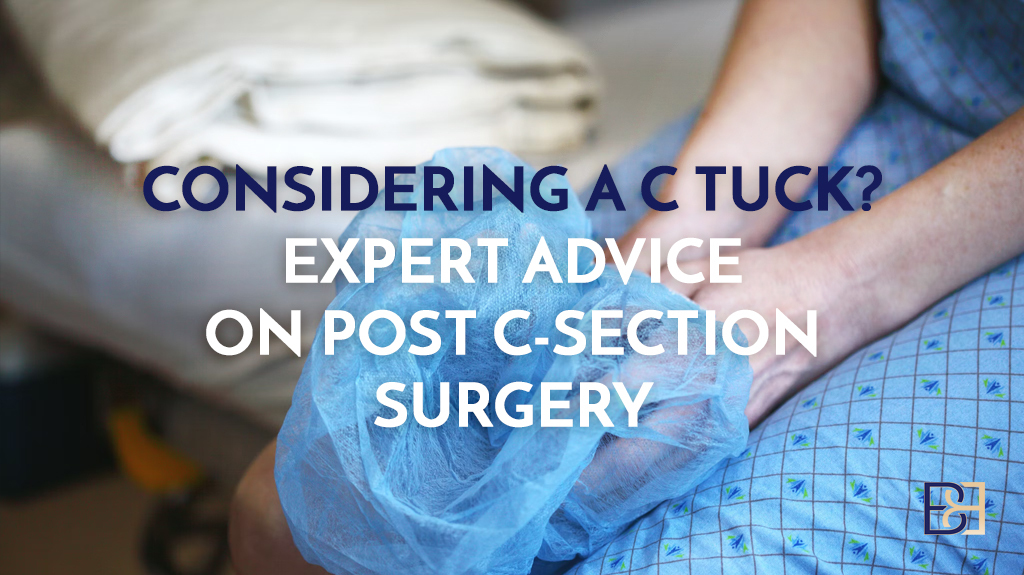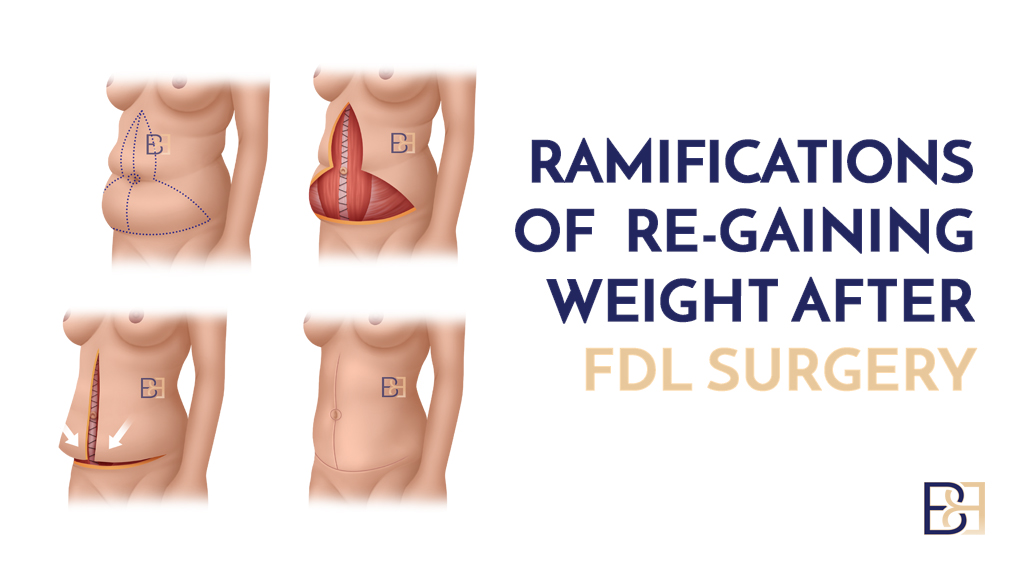After significant weight loss – whether through bariatric surgery, lifestyle changes, or medically supervised weight-loss medications – many patients choose lower torso operations to treat excess skin and skin laxity. Recovery is a vital stage in this journey. This page is an overview of the recovery process after different lower torso operations. Specific articles on each procedure (such as abdominoplasty, apronectomy, or belt lipectomy surgery) are available separately.
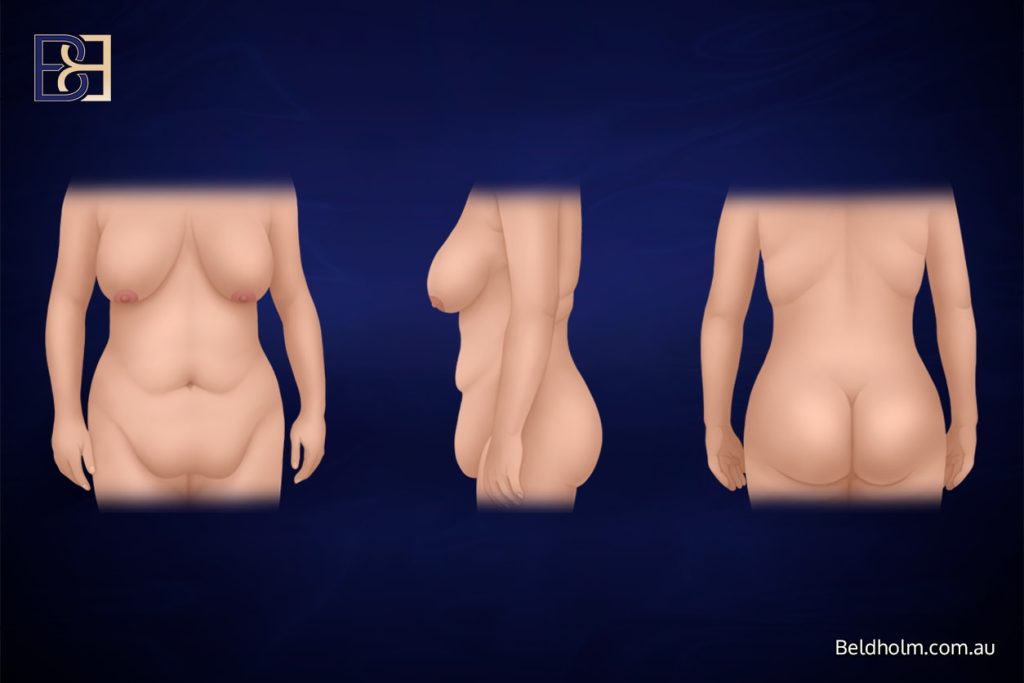
General Recovery Principles
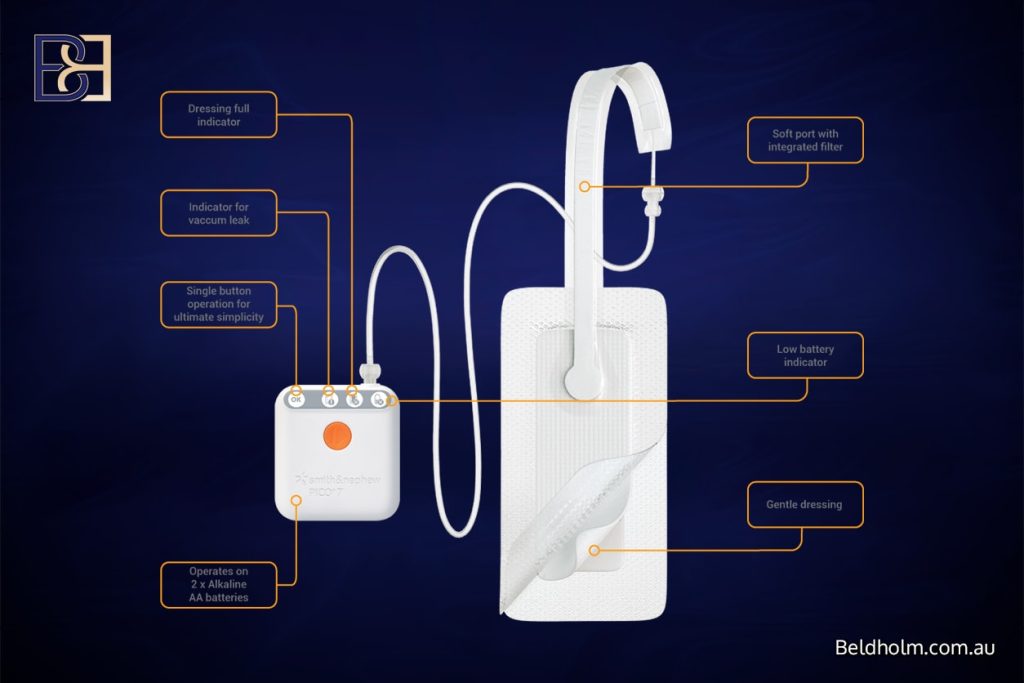
Recovery after body contouring surgery is gradual and requires planning. While every patient heals differently, there are common milestones:
- Hospital Stay: Most operations require at least a short stay at Maitland Private Hospital. This may range from one night to several days, depending on the extent of surgery.
- Initial Recovery Period: The first two weeks involve swelling, bruising, and discomfort. Pain management and wound care are essential.
- Compression Garments: These are worn full time for the first 4 weeks to support healing and control swelling. After this, they are usually worn half time for an additional 2 weeks, most often during the day when swelling tends to be more noticeable.
- Wound Care: Dressings are changed regularly. Dr Beldholm prefers to use either Comfeel dressings or PICO dressings, with the choice depending on the specific operation. My team and I review wounds closely during the early phase to check healing progress.
Timeline Overview
Recovery timelines vary from patient to patient and also from operation to operation. For larger procedures, the recovery period is usually longer.
First Week
- Rest, wound care, and gentle walking only.
- Pain managed with prescribed medications.
- Surgical drains, if used, are usually removed within a week.
Weeks 2–4
- Swelling begins to subside.
- Return to light activities, but no heavy lifting.
- Some patients can return to desk-based work by week 3–4.
Weeks 4–8
- Wounds strengthen.
- Walking encouraged; avoid strenuous activity.
- Compression garments remain important.
Months 2–3
- Patients often feel closer to normal.
- Scars are red and firm, but softening begins.
- Gradual exercise progression allowed under guidance.
6–12 Months
- Swelling resolves.
- Scars mature and fade.
- Long-term results become visible.
Book your appointment online now
Recovery by Procedure
Abdominoplasty (Tummy Tuck)
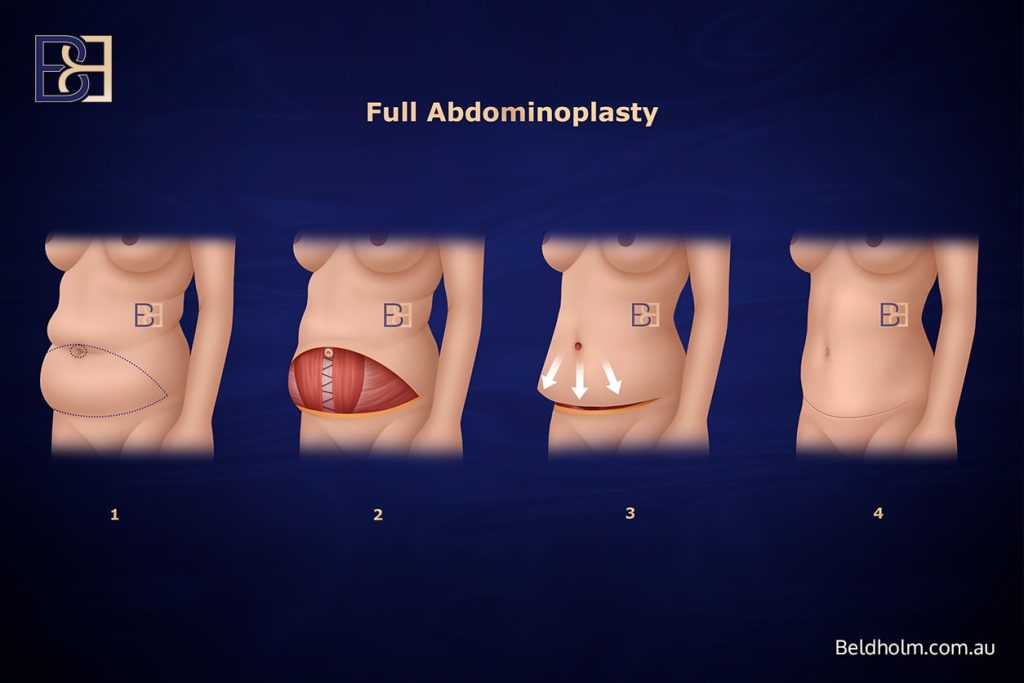
- Tightens the abdominal wall and removes excess skin from the lower abdomen.
- Recovery usually 4–8 weeks before returning to full activity.
- Patients with abdominal muscle separation (diastasis recti) may need longer support with compression garments.
Fleur-de-Lis Abdominoplasty
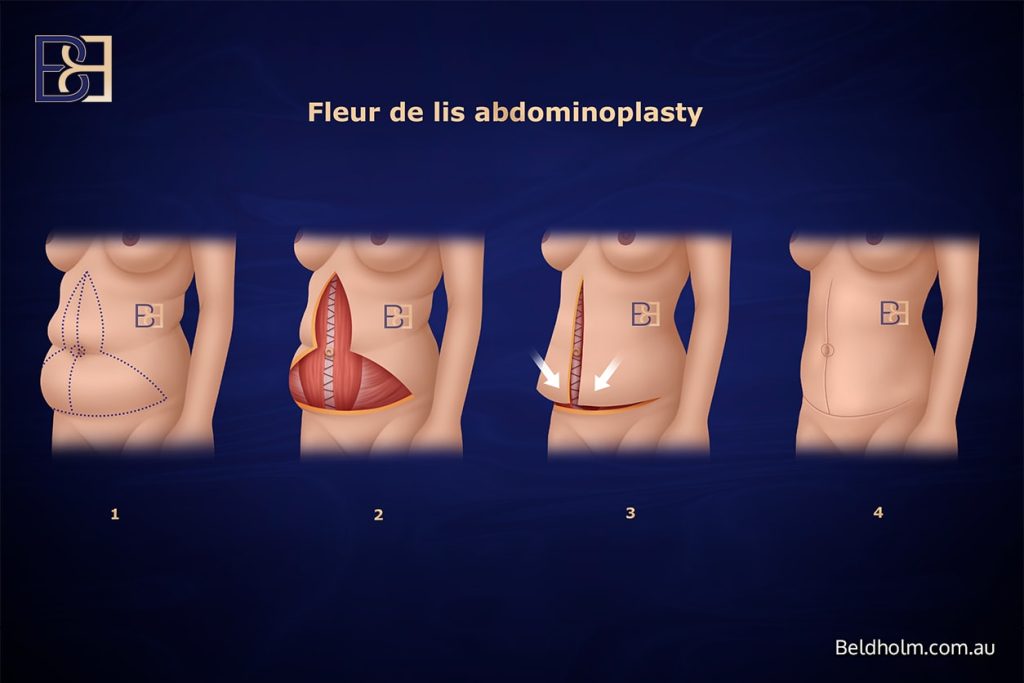
- Treats vertical and horizontal excess skin.
- Recovery is often slower due to a larger incision pattern.
- Close monitoring for wound healing is important.
Circumferential Lipectomy (Belt Lipectomy)
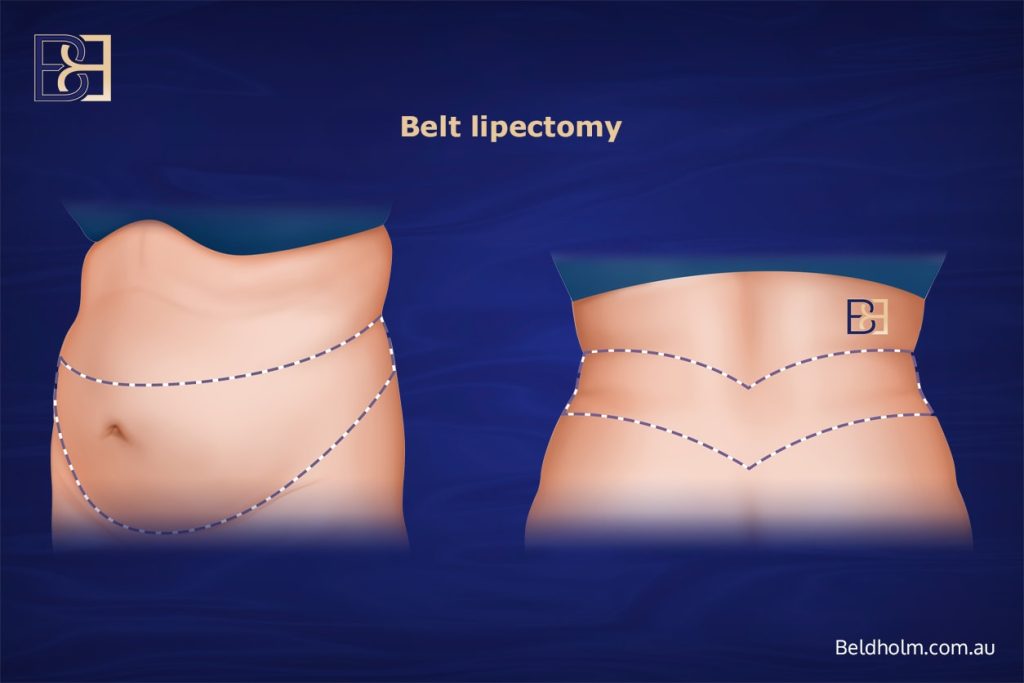
- Removes skin 360° around the torso, including flanks and back.
- Recovery period is longer, often 8–12 weeks before heavier activity.
Apronectomy (Panniculectomy)
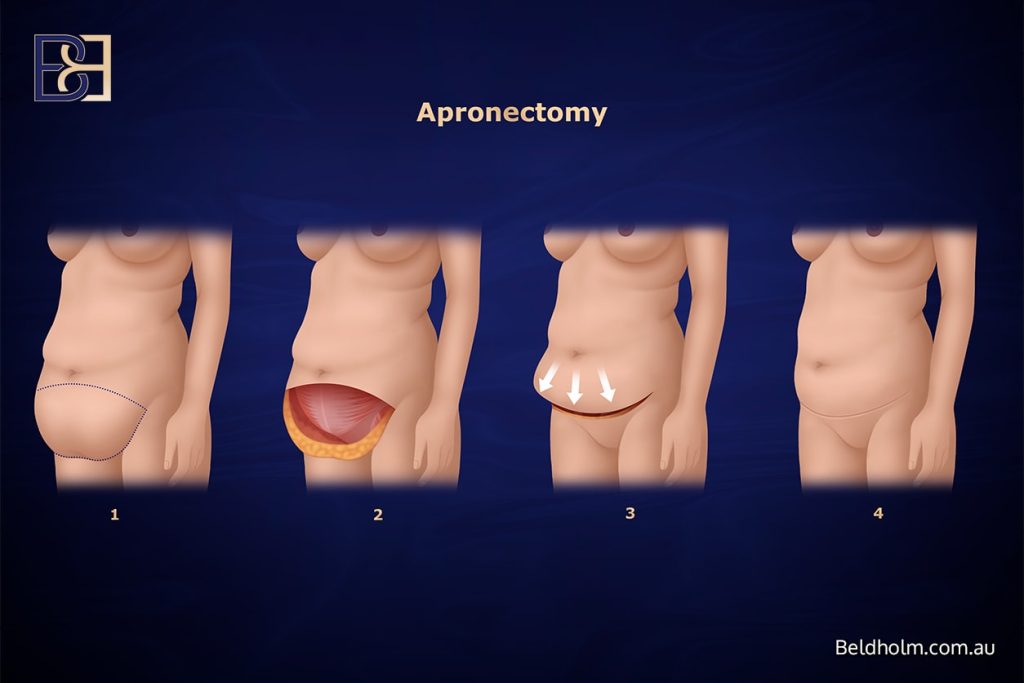
- Removes an overhanging apron of skin.
- Patients usually experience relief from rashes, but wound healing requires careful review.
Lower Back Lipectomy (gluteoplasty)
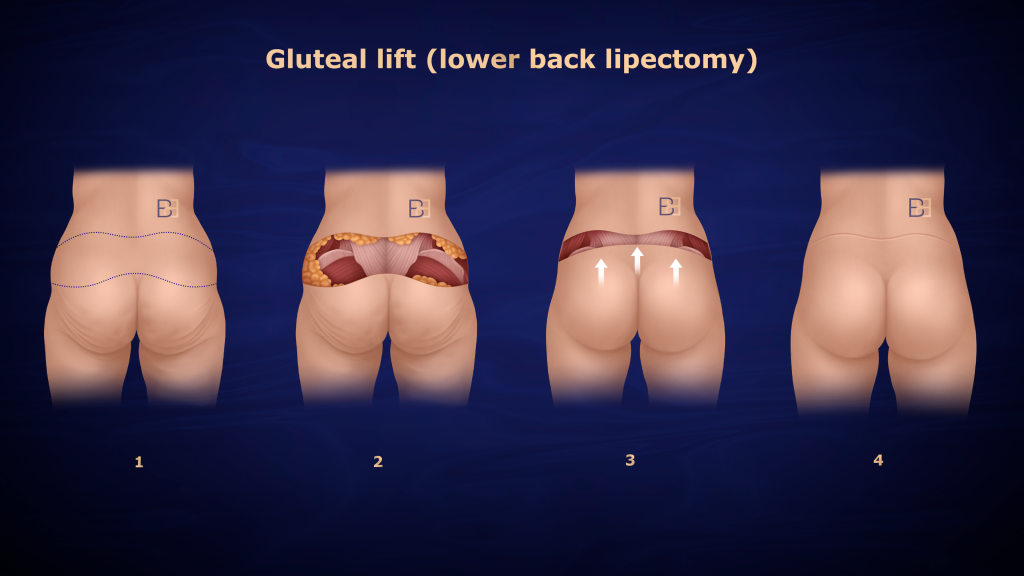
- Targets excess tissue across the lower back and buttocks.
- Can be combined with abdominoplasty, requiring longer healing.
Thigh Lift (Inner Thighplasty)
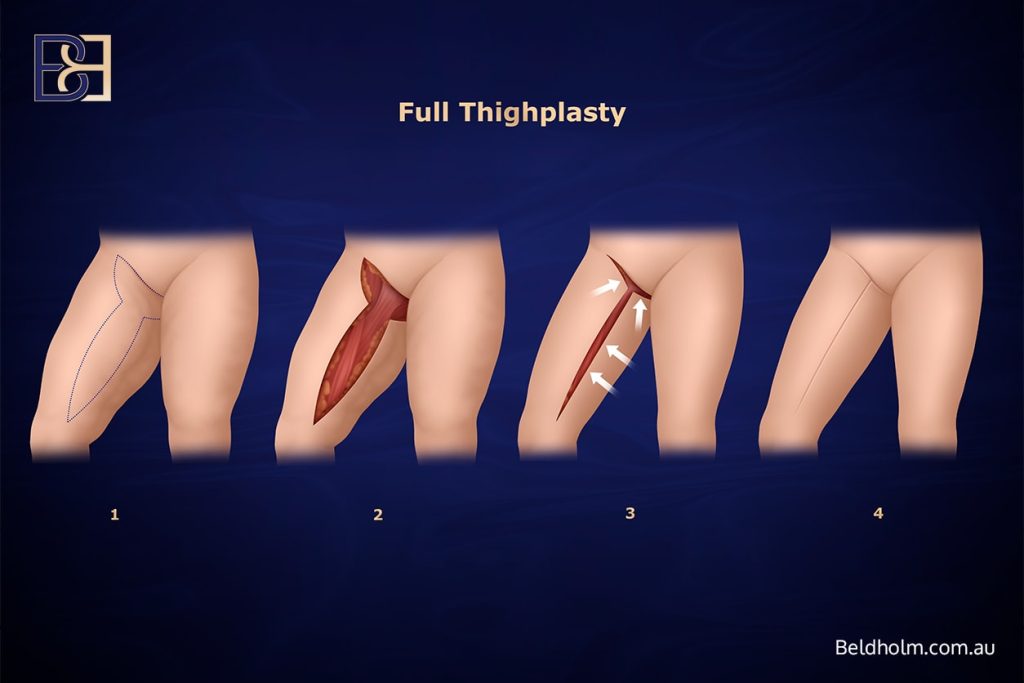
- Addresses excess skin on the inner or outer thighs.
- Mobility may be limited early due to the incision location.
Upper Body Procedures (Upper Torsoplasty, Brachioplasty, Mastopexy, Reduction mammoplasty)
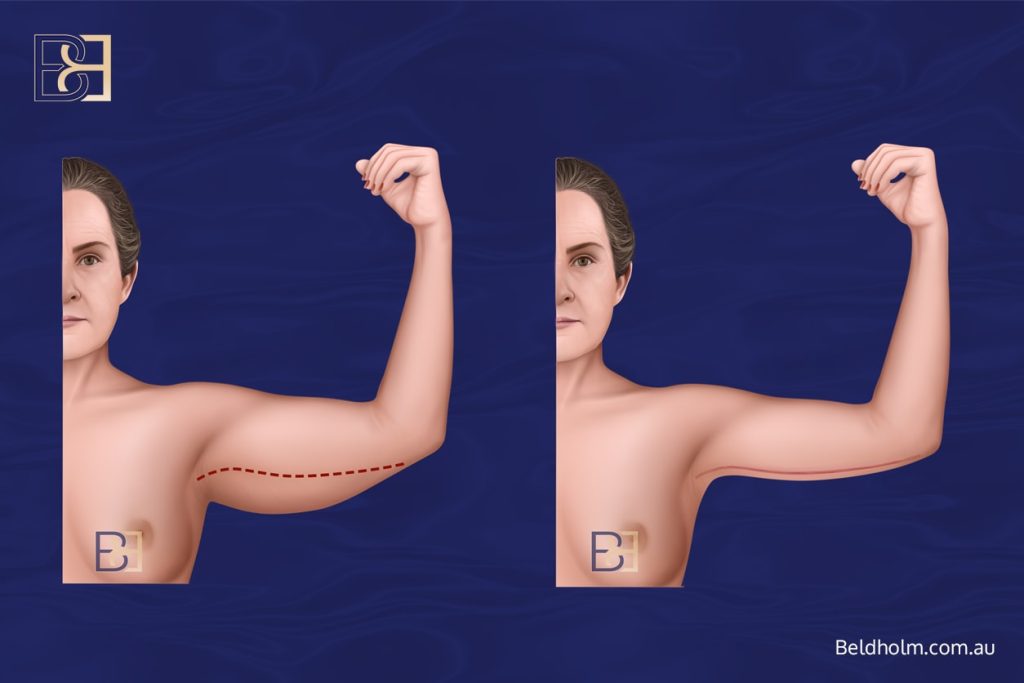
- It can be performed together with the lower torso operations.
- Recovery varies but follows similar principles: compression, wound care, and gradual activity.
Possible Complications
All surgery carries risks. Lower torso operations may include:
- Wound healing issues
- Bleeding or infection
- Seromas (fluid collections)
- Blood clots (deep vein thrombosis)
- Delayed scar maturation
- Contour irregularities or asymmetry
- Need for revision surgery in some cases
I discuss these risks in detail during every consultation.
Factors That Influence Recovery
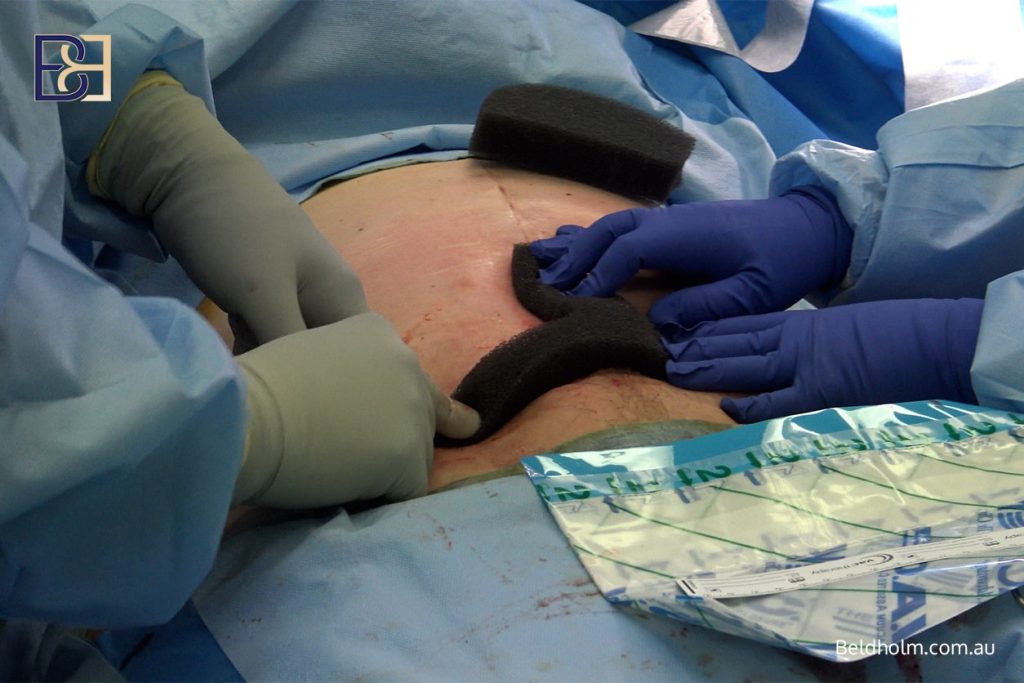
- Type of Operation: Larger procedures such as belt lipectomy require longer recovery.
- Extent of Skin Removal: More extensive excisions = more healing time.
- Medical History: Conditions like diabetes or smoking impact healing.
- Patient Habits: Following instructions about rest, compression garments, and wound care improves recovery.
Returning to Daily Life
- Work: Desk-based work usually after 3–4 weeks. Physical jobs may require 6–8 weeks.
- Exercise: Walking early is encouraged. Heavy activity only after clearance (often 8–12 weeks).
- Driving: Usually 2–3 weeks, once safe mobility returns and pain medication is no longer needed.
Dr Beldholm’s Advice

In my experience, recovery after lower torso surgery following significant weight loss requires patience and support. I recommend arranging help at home in the early stages, following garment use instructions carefully, and allowing several months for healing before major commitments.
Every patient’s recovery is unique. With preparation and guidance, most return to normal routines in a few months, with steady improvements continuing through the first year.

